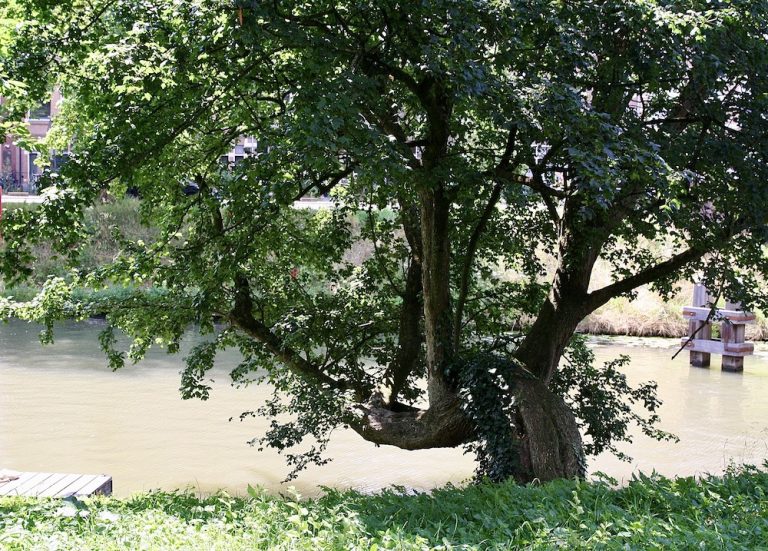
One of the unintended benefits of staying closer to home since March of this year (2020) has been a better acquaintance with Utrecht’s many trees. In all frankness, we didn’t recognize many different species, until having read Peter Wohlleben’s “The hidden life of trees”, and afterwards Richard Powers’ Pulitzer Prize-winning “The Overstory”. We became curious and suddenly began to notice the many, highly individual types around us.
One of our favorite walks has been to circle the medieval city on the inside of the city’s moat, the Singel. Without even trying we pass many of the most beautiful trees Utrecht has to offer. The city has helpfully put up plaques on many of the historic ones. They evidently feel that these are part of Utrecht’s rich heritage, and should be generally appreciated as such.
The city of Utrecht is responsible for about 160,000 trees of more than 580 species. They have a separate category for “monumental trees” (80 years or older). On the city’s tree map, you can click on an individual tree, and find out its species, its Dutch name, age and year of planting. If anything it would be an understatement to say that we’ve passed this field maple, planted in 1835, at least a thousand times without ever having noticed it

With Mrs Boots to give a sense of scale (and of humor) this “Ulmus glabra Cornuta” from 1840 is the country’s oldest wych elm (or Scots elm), and has the biggest diameter.

Particularly beautiful now in summer are the plane trees – platanus. This one from 1835 is just at the beginning of our circular walk around the medieval city.


What makes these trees so remarkable, in addition to the enormous, spreading crown, is their wonderful mottled bark. They just invite you to come in close.

The moat – de singel – was partially filled in and turned into a ring road in the 1970’s, but the city is nearly done reconnecting the last bit of waterway. Soon it will be completely joined up. In addition to de singel there two other main canals, both running north-south through the heart of Utrecht: the old and new canals. The oude gracht dates from 1122. Here’s a bit of the nieuwe gracht (begun at the end of the 14th century) with a black walnut from 1950.

At the top of the picture there’s a glimpse of the southern transept of our main church: the dom. It was the country’s only cathedral until the reformation, and was the Netherlands’ largest church. The nave blew down in a storm in 1674 and was never rebuilt.

Here’s a last plane tree to close: Utrecht’s fattest, again planted in 1835. It always makes me think of a Wagnerian soprano bidding her Tristan ‘Fahr wohl’! Mrs Boots believes there may well be a skinny tree hiding within, crying to be let out.
